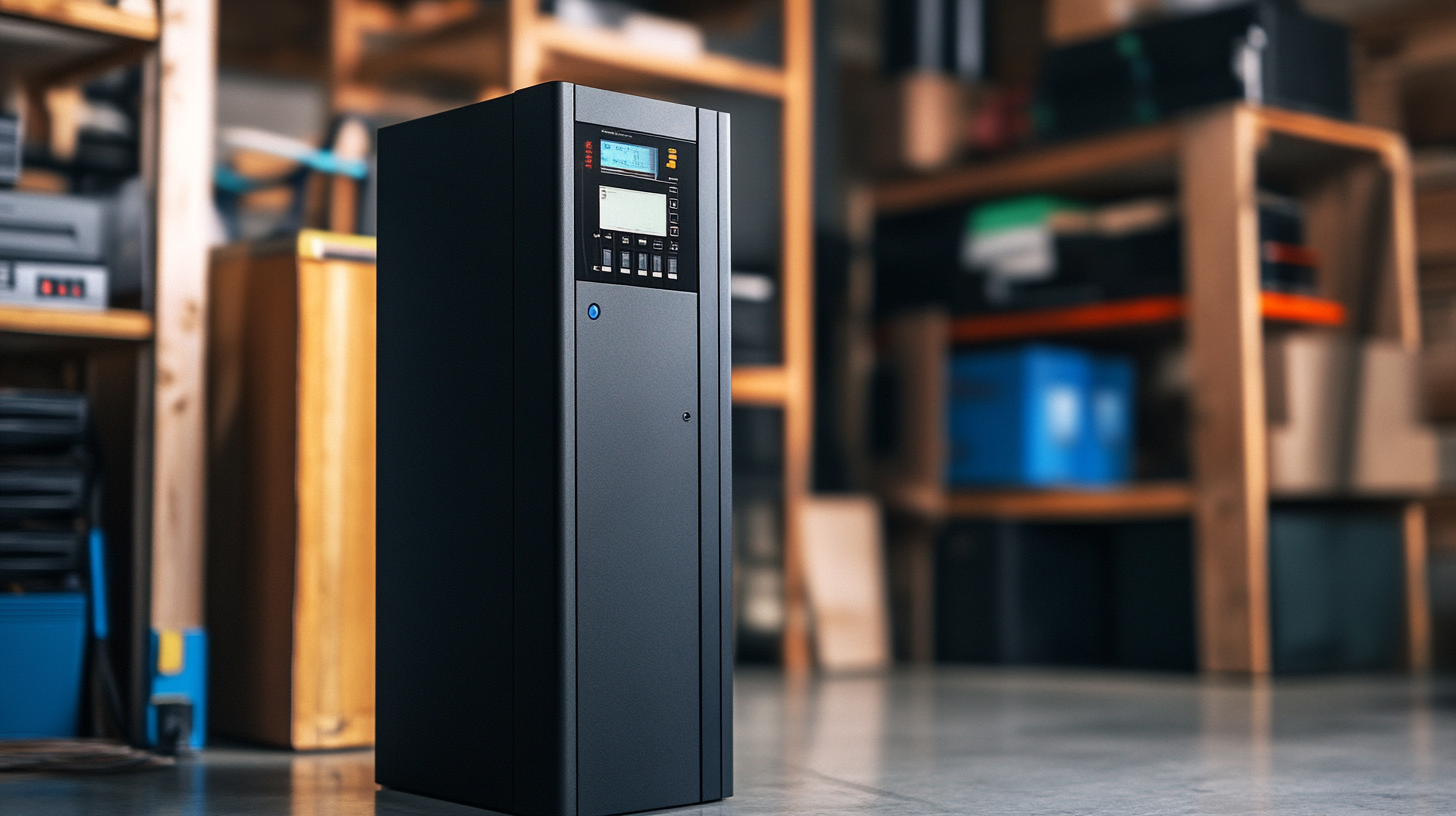Blog
How to Choose the Right Ups Battery Backup for Your Business Needs
In today's fast-paced business environment, maintaining continuous operations is crucial for success. One of the essential components in ensuring uninterrupted power supply is the use of a reliable UPS battery backup. This technology not only safeguards valuable equipment from unexpected power outages but also protects sensitive data from being lost or corrupted. As organizations increasingly rely on electronic systems, the importance of selecting the right UPS battery backup tailored to specific business needs cannot be overstated.
Choosing the appropriate UPS battery backup involves understanding the unique requirements of your business, including the types of equipment you need to protect and the duration of backup power required during outages. With a myriad of options available on the market, ranging from small units for individual devices to larger systems designed for entire networks, making an informed decision is essential. This blog will guide you through the key factors to consider when selecting the right UPS battery backup, ensuring that your business remains resilient and prepared for any power disruption.

Understanding Your Business's Power Requirements
When selecting the right UPS (Uninterruptible Power Supply) battery backup for your business, understanding your specific power requirements is crucial. Every business is unique, with varying demands based on the type of operations and the equipment used. For instance, a recent report highlighted that businesses with heavier data processing tasks require at least a 5kVA UPS to maintain consistent uptime, while smaller enterprises may only need a 1kVA model. This distinction is vital in ensuring you have adequate protection against power interruptions. Incorporating customer feedback into the decision-making process can also enhance solution selection. Companies that actively seek input on their power needs are better positioned to choose an appropriate UPS system that not only meets their immediate requirements but also adapts to future growth. According to industry data, companies that engage customers in product development achieve a 20% higher satisfaction rate, ultimately leading to improved operational resilience. Moreover, as businesses increasingly rely on AI and sophisticated data centers, the energy consumption associated with these technologies is rising significantly. Strategies to optimize energy use can include selecting UPS systems with energy-efficient ratings. Recent insights reveal that energy-efficient UPS systems can reduce overall energy consumption by up to 30%, translating to substantial cost savings. Overall, aligning your UPS battery backup selection with your business's power requirements, feedback mechanisms, and energy efficiency strategies will better prepare your organization for both present challenges and future growth opportunities.

Types of UPS Systems and Their Suitability for Different Needs
When selecting the right Uninterruptible Power Supply (UPS) system for your business, understanding the various types of UPS systems available and their suitability for different needs is essential. There are primarily three types of UPS systems: Standby (offline), Line-Interactive, and Online (double-conversion) UPS. Each type serves specific operational requirements, making it crucial for business owners to assess their unique power needs before making a decision.
Standby UPS systems are ideal for smaller businesses and less critical applications where brief power outages might not severely impact operations. They provide basic protection against power surges and interruptions. In contrast, Line-Interactive UPS systems offer a step up in performance, featuring automatic voltage regulation to manage minor fluctuations in input voltage, making them suitable for small to medium-sized enterprises that require moderate protection.
For mission-critical applications, an Online UPS system is the safest option. This system continuously converts AC power to DC and then back to AC, ensuring a consistent and clean power supply. It is particularly suitable for data centers and equipment sensitive to power disturbances. As the global lead acid battery market continues to grow—valued at USD 48.50 billion in 2024 and projected to reach USD 73.96 billion—investing in the right UPS system becomes increasingly important to safeguard business operations against power-related issues. By carefully evaluating business requirements and the strengths of each UPS type, companies can ensure continuity and reliability in their power supply.

Key Features to Look for in a UPS Battery Backup
When selecting a UPS battery backup for your business needs, it's crucial to consider key features that enhance reliability and efficiency during power interruptions. The core purpose of an Uninterruptible Power Supply (UPS) is to provide immediate power to critical devices when the main electricity fails. Therefore, understanding the different types of UPS systems—such as standby, line-interactive, and double conversion—is essential to make an informed choice.
One significant feature to look for is the UPS's capacity, which is measured in Volt-Amperes (VA). This capacity indicates how much load the system can handle. It's vital to ensure that the UPS can support your most critical devices, including computers, servers, and networking equipment, during an outage. Another important aspect is the battery technology used within the UPS. Advanced technologies, like Absorbent Glass Mat (AGM) batteries, offer advantages such as a longer lifespan and low self-discharge rates, making them ideal for businesses that require consistent performance.
Additionally, consider the UPS's runtime, which determines how long it can power your devices during an outage. Opt for models that provide sufficient backup time to allow for safe data backup and proper shutdown procedures. Features such as LCD displays can also be beneficial, providing real-time status updates and alerts about battery health and power usage. Investing in a quality UPS battery backup not only safeguards your equipment but also ensures business continuity in the face of unexpected power disruptions.

Calculating Runtime Needs: How Long Do You Need Power?
When deciding on the right UPS battery backup for your business, a critical factor to consider is your runtime needs. Understanding how long you need power during an outage can significantly influence your choice, ensuring that your operations remain uninterrupted. Begin by assessing the total load you intend to support during a power failure. This involves calculating the wattage of all equipment that needs protection, including computers, servers, networking devices, and any other essential tools.
Once you’ve calculated the total load, it’s time to determine the necessary runtime. How long do you want your equipment to stay powered during an outage? Businesses often under or overestimate this requirement, so it’s crucial to factor in typical outage durations in your area and the potential for extended downtime. Keep in mind that certain critical processes may require longer runtimes, while others may only need a short window to save work and power down equipment safely.
With your total load and desired runtime in hand, you can begin selecting a UPS unit that meets these specifications. Different UPS systems provide various runtimes based on their battery capacity and the load they support. It’s essential to match the UPS’s capabilities with your calculated needs to ensure that you have adequate backup power when it matters most.
Evaluating Cost vs. Performance for Your UPS Investment
When selecting an uninterruptible power supply (UPS) for your business, evaluating cost versus performance is critical to ensuring that your investment meets your operational needs. According to a report by IHS Markit, the global UPS market is projected to reach $15 billion by 2025, driven by the increasing demand for reliable power solutions. However, not all UPS systems offer the same level of performance at their price points.
A high initial cost does not always guarantee superior performance. For instance, while online double-conversion UPS systems provide the best protection against power disturbances, they can be significantly more expensive than line-interactive models. For many businesses, particularly those with less critical power needs, a line-interactive UPS might deliver sufficient performance at a much lower cost. Research from Frost & Sullivan indicates that businesses can save up to 30% on their power protection budget by choosing the appropriate UPS technology tailored to their specific operational environment.
Furthermore, it is crucial to consider the total cost of ownership (TCO) when evaluating UPS investments. This includes maintenance, energy consumption, and potential downtime costs. The Uptime Institute reported that unplanned outages can cost businesses over $9,000 per minute, underscoring the importance of selecting a UPS that balances upfront costs with long-term reliability. Therefore, when evaluating options, businesses should not merely compare purchase prices but also assess the performance metrics that align with their unique power requirements.

